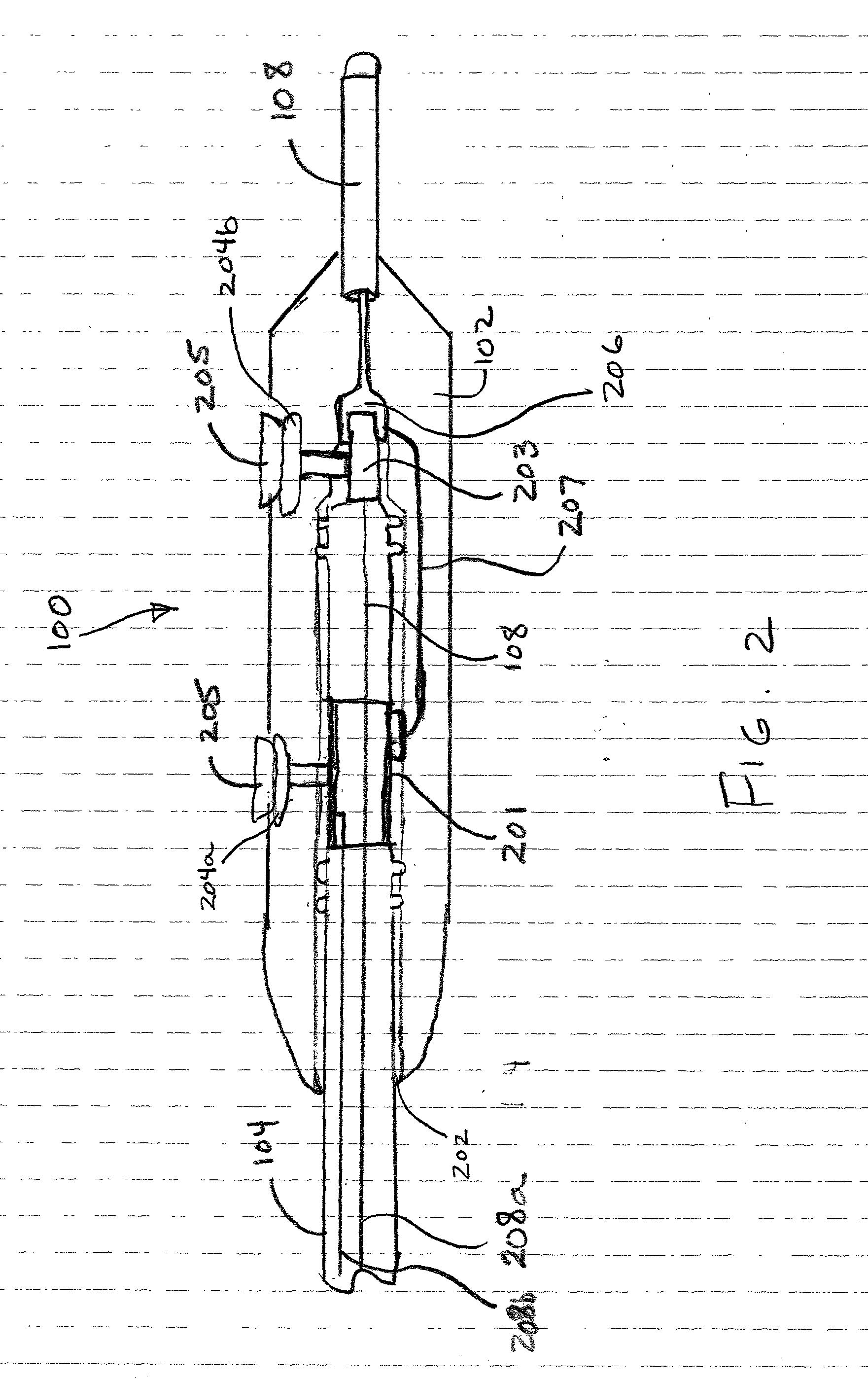Method and apparatus for shunting induced currents in an electrical lead
a technology of induced current and electrical lead, which is applied in the direction of internal electrodes, transvascular endocardial electrodes, therapy, etc., can solve the problems of vastly more sophisticated and complex implantable medical devices, and insufficient operation of previously implanted leads
- Summary
- Abstract
- Description
- Claims
- Application Information
AI Technical Summary
Problems solved by technology
Method used
Image
Examples
first embodiment
[0039] FIG. 5 illustrates the electronic filter 402 (shown in FIG. 4). The electronic filter 402 comprises a capacitor 502 connected in series with the electrode 108 and a lead electrode 304 via the lead conductor 208. Generally, the capacitor 502 has higher impedance characteristics at lower current frequencies and lower impedance at higher current frequencies. The capacitance of the capacitor 502 is selected to provide a low impedance relative to the electrode-to-tissue impedance (ranging from about 20 ohms to about 100 ohms) at frequencies characteristic of currents induced by diagnostic and / or therapeutic energy producing equipment while providing a high impedance relative to the electrode-to-tissue impedance at frequencies characteristic of currents produced by pacing devices, neurostimulation devices, and the like. In this way, lower frequency currents are substantially prevented from flowing from the electrode 108 into the lead conductor 208, while higher frequency currents, ...
third embodiment
[0044] FIG. 7 illustrates the filter 402 (shown in FIG. 4). In this embodiment, the filter 402 includes a capacitor 702 and an LC network 704 connected in series between the lead electrode 304 and the electrode 108. In the illustrated embodiment, the LC network 704 is constructed using a thin wire 706 with thin insulation that, when wound into a coil 708, uses the self-capacitance (illustrated by capacitors 710) and the inductance of the coil 708 to form a resonant circuit. In one embodiment, the LC network 704 self-resonates at a frequency of about 32 MHz and the capacitor 702 provides a low impedance at a frequency of about 64 MHz. Thus, currents having frequencies of about 32 MHz (the resonant frequency of the LC network 704) are impeded from being emitted from the lead electrode 304, while currents having frequencies of about 64 MHz are allowed to flow from the electrode 108 and, to a lesser extent, from the lead electrode 304. In leads (such as the lead 104 or the like) that ha...
PUM
 Login to View More
Login to View More Abstract
Description
Claims
Application Information
 Login to View More
Login to View More - R&D
- Intellectual Property
- Life Sciences
- Materials
- Tech Scout
- Unparalleled Data Quality
- Higher Quality Content
- 60% Fewer Hallucinations
Browse by: Latest US Patents, China's latest patents, Technical Efficacy Thesaurus, Application Domain, Technology Topic, Popular Technical Reports.
© 2025 PatSnap. All rights reserved.Legal|Privacy policy|Modern Slavery Act Transparency Statement|Sitemap|About US| Contact US: help@patsnap.com



